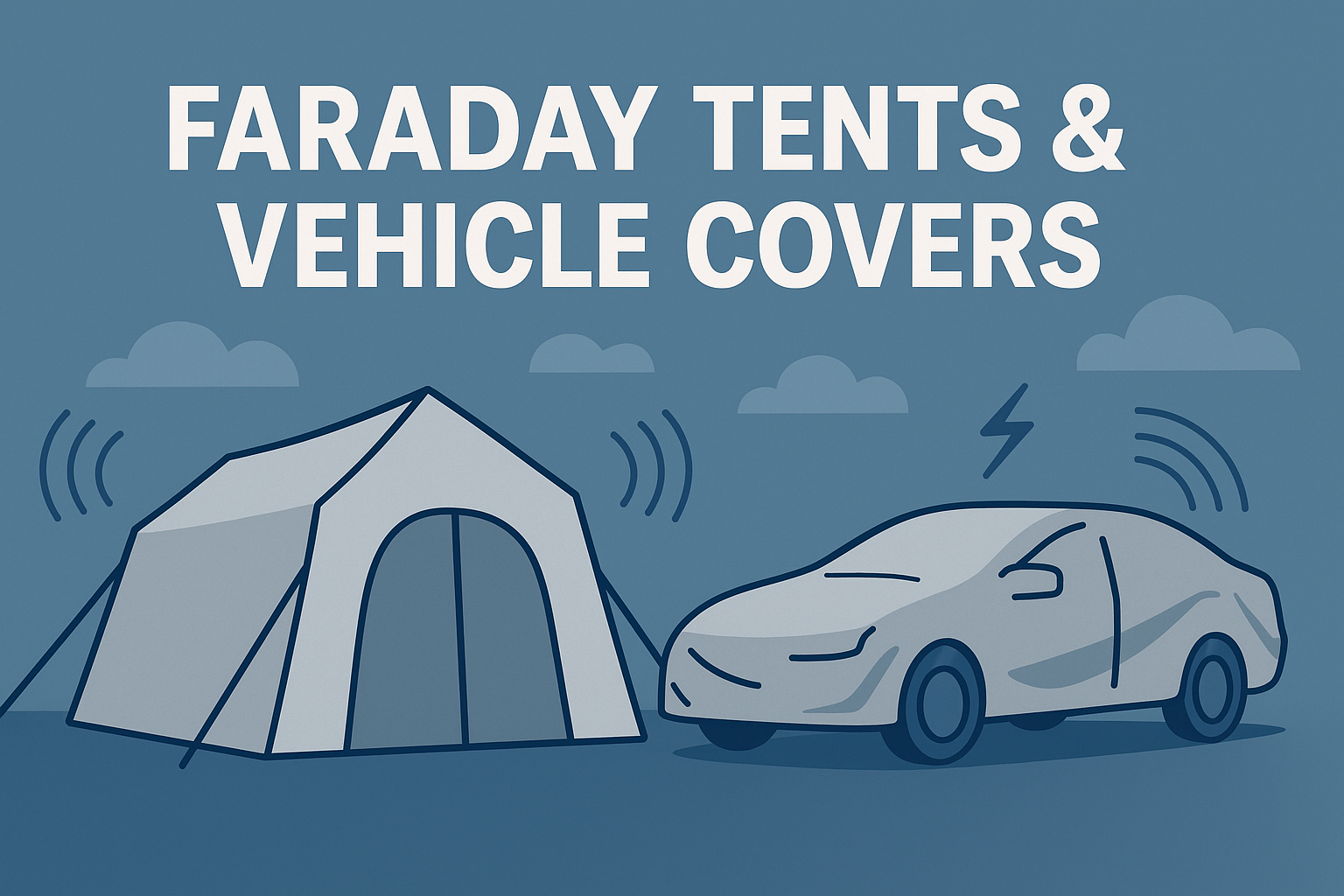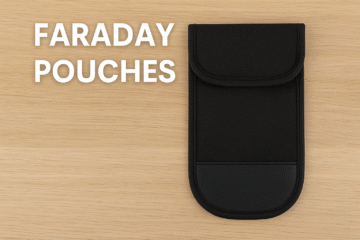Transparent Protection Against Wireless Radiation
Modern architecture increasingly embraces open layouts, expansive windows, and wireless technology—but these same conveniences can also increase exposure to radiofrequency (RF) radiation from Wi-Fi routers, 5G antennas, and cell towers. For those seeking invisible protection that doesn’t compromise light or aesthetics, RF shielding film offers an elegant and effective solution.
What Is RF Shielding Film?
RF shielding film is a transparent or semi-transparent material designed to reduce electromagnetic radiation—specifically radiofrequency (RF) and microwave signals—passing through glass and other surfaces.
It works similarly to a Faraday cage, using a thin layer of conductive metals or oxides (commonly silver, copper, indium tin oxide, or stainless steel micro-mesh) to reflect and absorb incoming radiation.
Applied directly to windows, these films provide invisible protection without sacrificing visibility, natural light, or building aesthetics.
How RF Shielding Film Works
RF shielding film leverages a conductive coating that interacts with electromagnetic fields. When RF waves strike the surface, they are reflected or dissipated rather than passing through into the interior space.
Key performance factors include:
- Material conductivity: Determines how effectively it reflects radiation.
- Layer thickness and uniformity: Thicker or denser coatings provide greater attenuation.
- Surface grounding: Grounded films perform better in reducing electric fields.
- Installation coverage: Complete, edge-to-edge coverage prevents “leak points.”
Well-applied films can achieve 30–60 dB attenuation, blocking 99.9% or more of incoming RF energy depending on frequency and installation quality.
Types of RF Shielding Films
| Film Type | Composition | Appearance | Shielding Range | Typical Use |
|---|---|---|---|---|
| Metalized PET Film | Aluminum or copper micro-layer | Light gray tint | 30–50 dB | Home and office windows |
| Silver-Based Nano Coating | Silver oxide conductive layer | Nearly clear | 40–60 dB | Premium residential and laboratory applications |
| Indium Tin Oxide (ITO) | Transparent conductive oxide | Light blue hue | 25–45 dB | Commercial/industrial buildings |
| Carbon-Infused Film | Non-metallic conductive carbon | Slight tint | 20–35 dB | Cost-effective residential installs |
Benefits of RF Shielding Film
1. Transparent EMF Protection
Unlike curtains or metallic mesh, RF shielding film allows full light transmission while blocking wireless radiation—ideal for maintaining open, natural spaces.
2. Broad Spectrum Shielding
Reduces signals from Wi-Fi, 4G/5G, Bluetooth, and smart meters, plus microwave and radar frequencies.
3. Energy Efficiency and UV Protection
Many RF films double as solar control films, reflecting infrared heat and UV rays to improve indoor comfort and energy performance.
4. Privacy and Glare Reduction
Metalized coatings can add one-way mirror effects, offering privacy during daylight hours.
5. Aesthetic Versatility
Films come in clear, neutral, or tinted finishes, seamlessly integrating into modern interiors.
Applications of RF Shielding Film
Residential Homes
Ideal for bedrooms, nurseries, or living spaces facing cell towers or high EMF zones. When combined with EMF shielding drapes, films create layered protection.
Commercial and Office Spaces
Used to protect sensitive electronics and reduce EMF interference in conference rooms, laboratories, or control centers.
Hospitals and Clinics
RF films are valuable in areas with sensitive equipment, minimizing stray electromagnetic interference.
Automotive and Aviation
Applied to vehicle windows to limit internal RF exposure while preserving signal clarity for navigation systems.
Installation Considerations
- Professional Installation Recommended: Achieving full coverage without bubbles or air gaps is crucial for performance.
- Grounding: Certain films include grounding tabs or can be paired with conductive tape to reduce electric fields.
- Edge Sealing: Properly seal film edges to maintain conductivity and prevent peeling.
- Layer Compatibility: Avoid combining with low-E or metallic glass coatings without testing—some layers can cancel each other’s benefits.
- Testing: Always verify attenuation using an RF meter before and after application.
Comparison: Leading RF Shielding Films
| Brand / Product | Composition | Transparency | Shielding | Approx. Price (per sq. ft.) |
|---|---|---|---|---|
| YShield RDF72 Film | Silver-coated PET | 70% visible light | 35–45 dB | $8–$12 |
| LessEMF Window Shield Film | Copper/Nickel layer | 65% visible light | 30–40 dB | $7–$10 |
| 3M Conductive ITO Film | Indium tin oxide | 75% visible light | 25–35 dB | $9–$15 |
| SLT Conductive NanoFilm | Silver nano-coating | 80% visible light | 50–60 dB | $10–$18 |
| BlocFilm RF Glass Protector | Carbon-infused clear film | 70% visible light | 25–35 dB | $6–$9 |
Each product varies in balance between transparency, reflectivity, and shielding strength.
Testing RF Shielding Film Effectiveness
To measure real-world results:
- Record baseline readings of RF strength using an RF meter (in µW/m² or dBµV/m).
- Apply the film.
- Retest from inside the room, facing the source (router, tower, or phone).
- Expect a noticeable drop—often 90–99.9% reduction depending on the film and environment.
Films with verified lab test data offer the most reliable performance metrics.
Maintenance and Longevity
- Cleaning: Use soft microfiber cloths and non-abrasive cleaners to avoid scratching conductive layers.
- Lifespan: Quality RF films last 8–15 years depending on UV exposure and installation quality.
- Replacement: Periodically check for edge degradation or adhesive failure that can impact shielding.
Integrating RF Shielding Film Into a Low-EMF Strategy
To achieve optimal EMF reduction, combine window films with other materials such as:
- EMF shielding paints for walls and ceilings.
- Faraday fabrics or meshes for additional layering.
- EMF curtains or drapes for flexible coverage and visual softening.
- Grounding mats or fabrics to mitigate electric field buildup.
This layered approach maximizes attenuation and comfort without overhauling the structure of the space.
Key Takeaways
- RF shielding film provides transparent, high-performance EMF protection that’s ideal for windows and glass surfaces.
- Uses conductive coatings (silver, copper, or carbon) to block up to 99.99% of wireless radiation while maintaining visibility.
- Works best when professionally installed with full coverage and grounding.
- Ideal for homes, offices, clinics, and vehicles, balancing aesthetics, comfort, and protection.
- When paired with shielding curtains or paint, it forms a powerful, invisible barrier against environmental EMFs.

